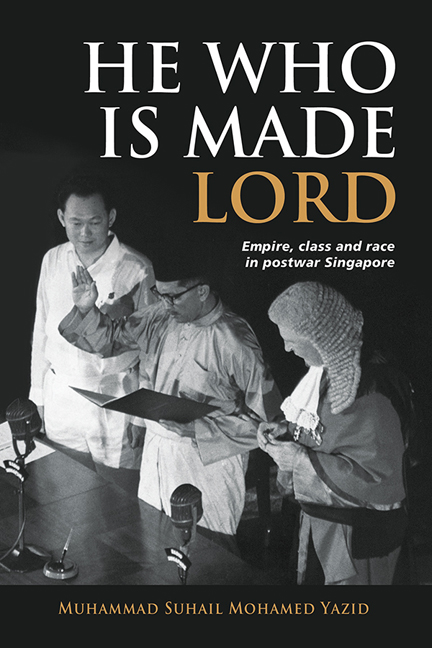Book contents
3 - Imperial, or Malay(an) Symbol?
Published online by Cambridge University Press: 01 March 2024
Summary
Singapore in the British World System
Six months after the PAP's electoral victory, Yusof was inaugurated as Yang di-Pertuan Negara. This moment was celebrated as the complete realization of the 1958 Constitution. The opening section of this book has recounted the subterranean tensions prickling the symbolic gestures of the Yusof's swearing-in ceremony. Even though both Lee and Yusof heralded a sense of emancipation from colonial rule, the procedures reinforced Singapore's position as a component of the British imperial system. Indeed, the appointment of the Malayan-born Yang di-Pertuan Negara was legitimized through familiar rituals which upheld the sovereign authority of Britain over Singapore. Yusof acceded to Royal Instructions from the Queen and also recited the pledge of allegiance to the British Crown. Meanwhile, imperial symbols like God Save the Queen were still given ceremonial deference.
In the global age of decolonization, Singapore had transformed into a layered political entity which met both the needs of colonial control and the growing demands of self-determination. The implementation of the 1958 Constitution conjured a graphic change in Singapore by replacing the British governor with the Yang di-Pertuan Negara. Designers of
the latter envisioned its appointee as a captivating ornamental figure, a personage who could signify the city-state's transition to self-government. But the imperial clothes of the governor's successor were not so easily shed. Paradoxes and perplexities interrupted attempts to make the Yang di-Pertuan Negara meaningful. These questions animate the story ahead: how did the office of Yang di-Pertuan Negara embody both a breakdown and an entrenchment of Singapore's colonial status? How was sovereignty performed to muddle the city-state's continued standing as a British colony?
To expose the contestations behind Singapore's colonial status, it may be helpful to retrace the steps of Singaporean leaders, taking a closer look at the granular details of the two constitutional talks in 1956 and 1957. During these negotiations, the British were firm in their stance to keep Singapore as a vassal state that was firmly within the ambit of the United Kingdom. The Singaporean delegations, uncomfortable with the prospects of perpetual colonial rule, sought to abate complete British hegemony over the city-state. With this aim in mind, the 1956 Marshall delegation proposed “dominion status” for Singapore.
- Type
- Chapter
- Information
- He Who Is Made LordEmpire, Class and Race in Postwar Singapore, pp. 70 - 120Publisher: ISEAS–Yusof Ishak InstitutePrint publication year: 2023



